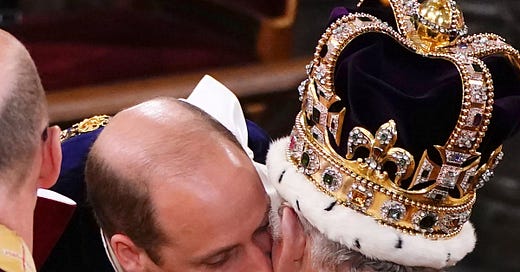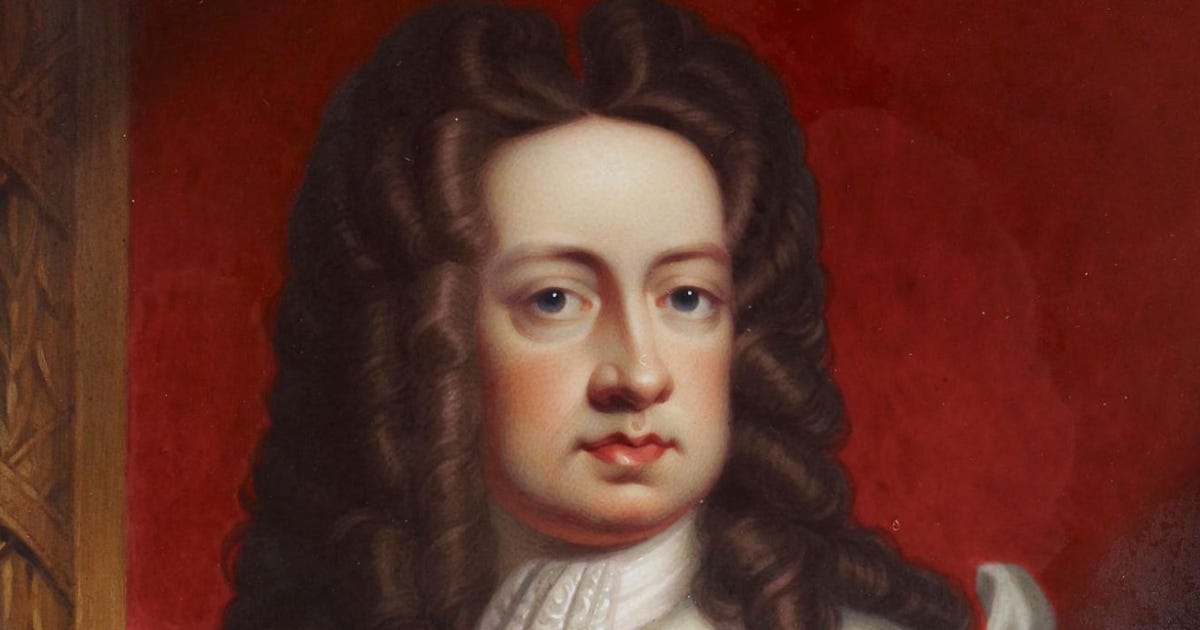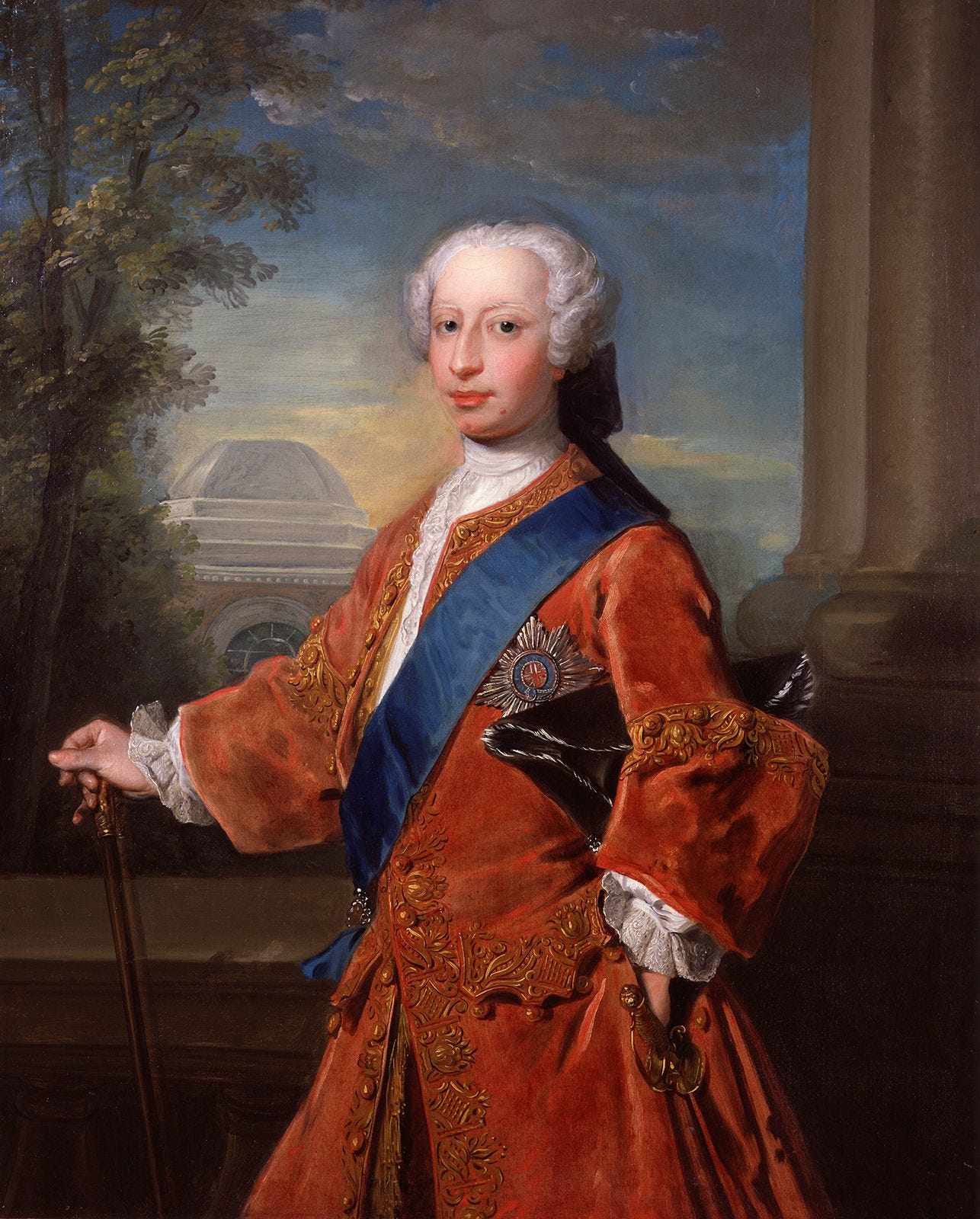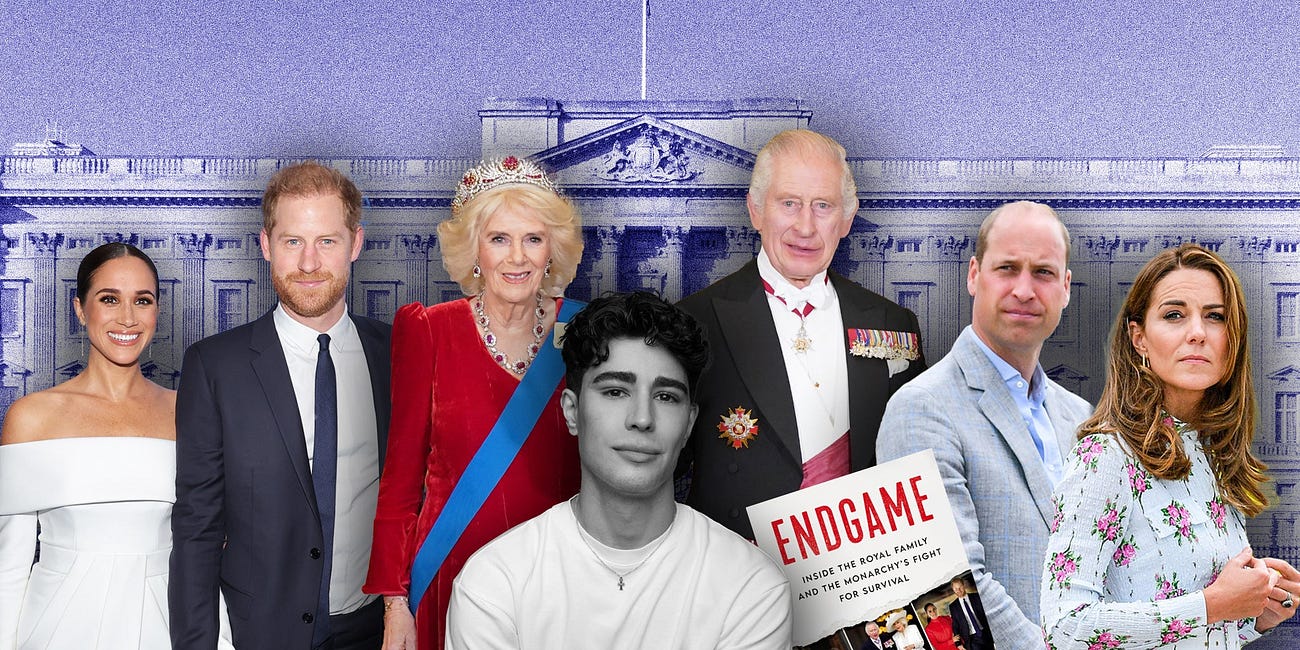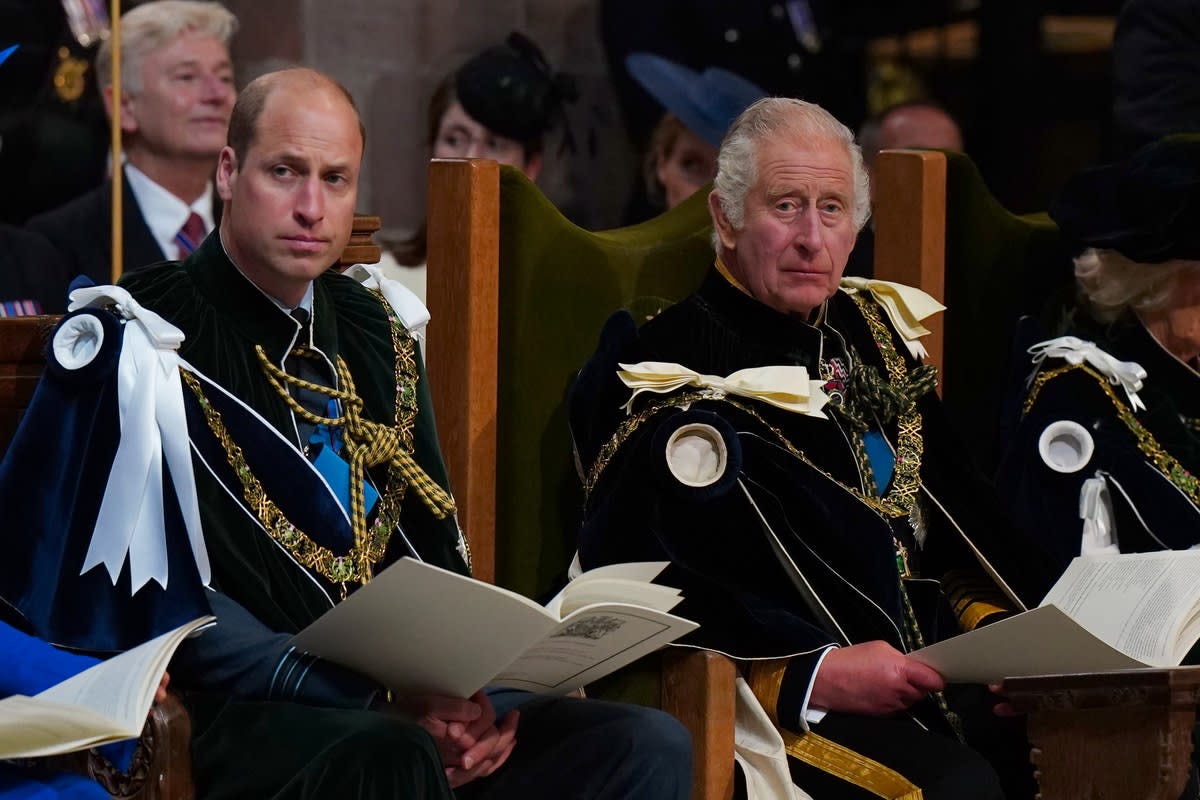Rival Courts: Then and Now
centuries apart, the tensions between monarch + heir remains a royal tradition
If you thought the Royal Family’s messiness started with Montecito, let me introduce you to George I—who imprisoned his wife, utterly loathed his son, and brought a mistress nicknamed “The Maypole” to court.
This week on Off With Their Headlines (my podcast with
!), we’re wrapping up a mini-series on rival courts. We’ve already zoomed in on what happens when royal heirs set up shop against their reigning parents, and…gosh, royal history really is cyclical, isn’t it?Because as much as the headlines obsess over Sussex vs. Wales, the real tensions at the court of King Charles III may still be simmering between two kings: one crowned, one still waiting (but eager) for his turn in the limelight.
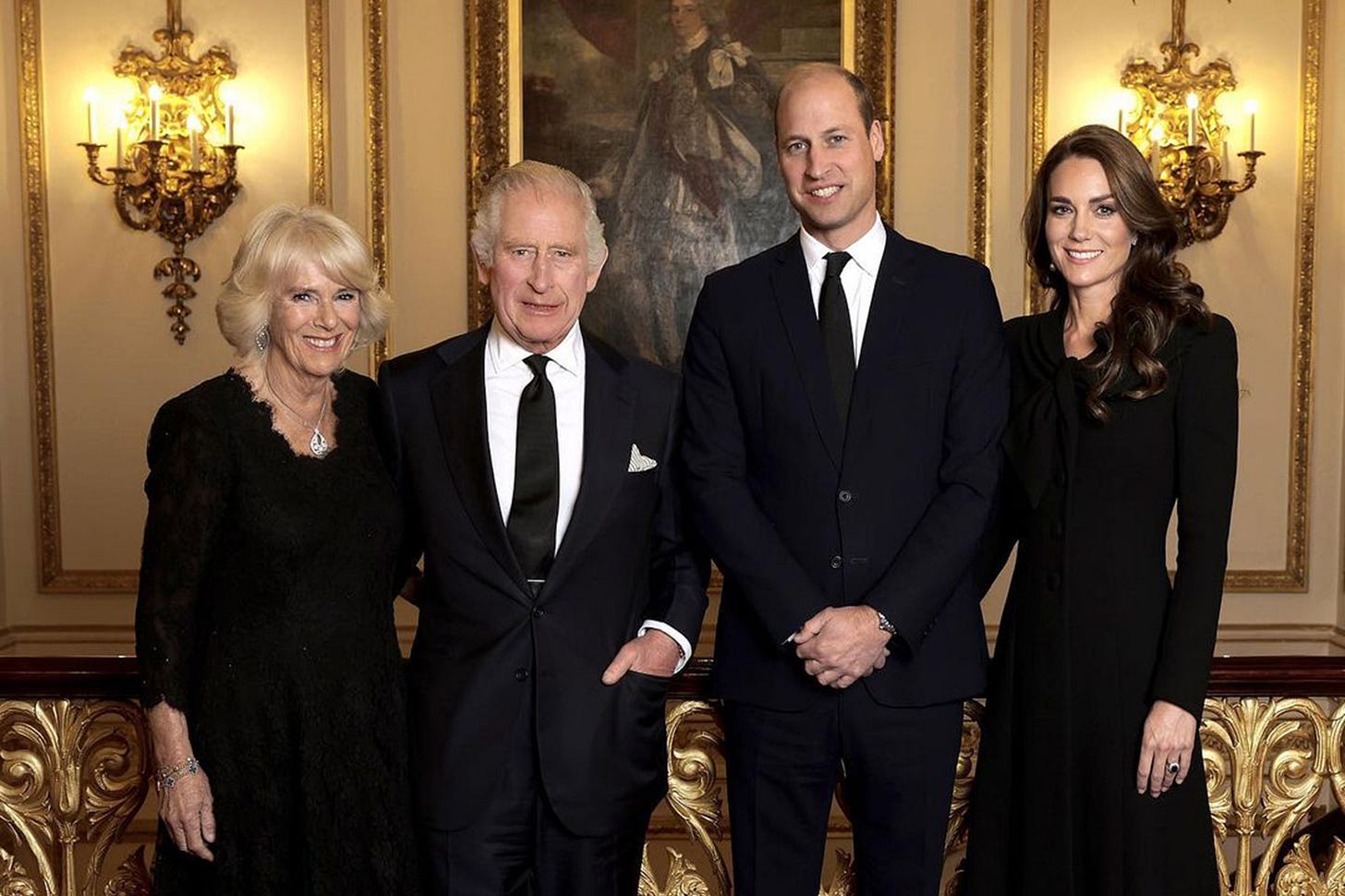
A Georgian Grudge Match
Ah, the Georgians. AKA “We’re only here because y’all weirdos passed over fifty (that’s 5-0) more eligible Catholics for the top job.” When the House of Hanover was brought in following the death of Queen Anne in 1714, they didn’t just import German customs and a questionable grasp of English. They also brought enough father/son drama that Shakespeare himself might think this was all a bit heavy-handed.
When George I took the throne in 1714, he arrived with no intention of playing happy families. His estranged wife was locked away in Germany. His son, the future George II, was popular, English-speaking, and fiercely loyal to his imprisoned mother. You can guess how things went from here.
By 1717, a full-on family meltdown led to the Prince of Wales being banished from court (you’ll want to listen to our May 22nd episode to hear Meredith equate this to some Real Housewives drama). The king took custody of his grandchildren and, in response, the younger George and his wife Caroline built a “rival court” at Leicester House. This base of operations came complete with opposition politicians and enough society figures to completely divide London.
This wasn’t a private family feud…it was political. It was press-worthy. It was branding. And it wouldn’t be the last.
When George II ultimately succeeded his father in 1727, he carried on the family tradition by feuding with his son, Frederick, who would also go on to form his own court, align with dissident Whigs, and campaign against the government.
It was, again, a war of image, policy, and proximity to power. George II got so sick of him that when Frederick died unexpectedly, the king reportedly said, “I lost my eldest son—but am glad of it.”
🎧 Want more age-old royal drama? We unpacked the original “rival courts” of Georgian England and what they reveal about royal identity a few weeks back on OWTH. Listen here.
The Carolean Echo
Fast forward 300 years, and the playbook hasn’t changed all that much.
Back in 2023, I asked royal commentator Omid Scobie if the tension between King Charles and Prince William reflected a broader institutional issue—and his answer has stuck with me:
“Charles took the throne as a much less popular monarch than his mother…and Charles could benefit from perhaps some of the popularity that his son, Prince William, and Catherine continue to enjoy. Instead, we’ve seen an almost intentional distancing between the two, where the Wales agenda has been very much siloed away from King Charles’s own work.”
Read more from our discussion of his book, Endgame, here:
I chatted with Omid Scobie about ENDGAME
As someone who read Omid Scobie’s Endgame before the British press, who nonetheless spent the days leading up to its release lambasting the author for “attacks” on the Royal Family, seeing the media frenzy develop around this book was truly something else. The book that
We haven’t seen Charles and William team up on major engagements (beyond the absolutely necessary, institution-centric stuff). We have seen Kensington Palace offer subtle contrasts between the two: briefings about William’s plans for a “modern” reign, and glowing features in British broadsheets about his vision for a monarchy that delivers “practical benefits” over ribbon-cutting. There was even a five-point plan for William’s monarchy floating around before the crown had even touched Charles’ head.
Sources close to William call this smart planning…others might call it impatience.
Whatever it is, it’s happening out in the open. And the historic playbook tells us that when a would-be king gathers influence before his time, it’s not just personal. It’s power politics.
So…What’s Next?
Leicester House had its Patriot Whigs. William has Earthshot, Homewards, and sympathetic Telegraph journalists sketching out his “five-point plan.” He’s not overthrowing anyone anytime soon…but he is building a brand distinct from his father’s.
And while the Firm might be tempted to spin this moment in history as a ~unified front,~ history reminds us that rival courts tend to fracture more than they forge.
Let’s just hope no one ends up in a German prison this time.
To hear more about how William might be taking tips from his father’s playbook (who famously spent 70 years marinating in the shadow of his mother), you’ll have to tune into Thursday’s episode of Off With Their Headlines! Part I of “Rival Courts for Modern Royals” is available now. Things only get messier from there.
Listen wherever you get your podcasts—and if you like what you hear, leave us a nice review and/or a 5-star rating!


